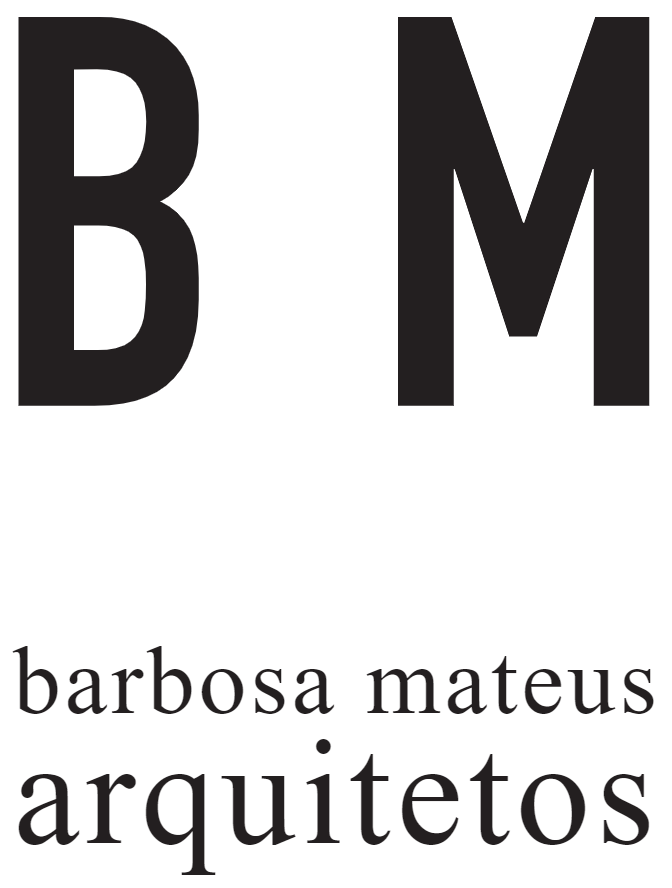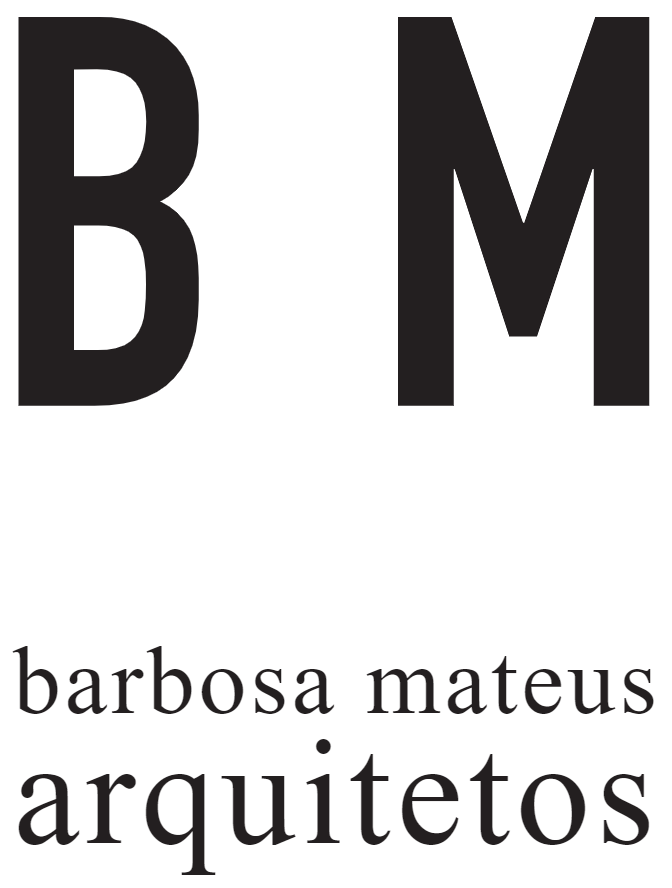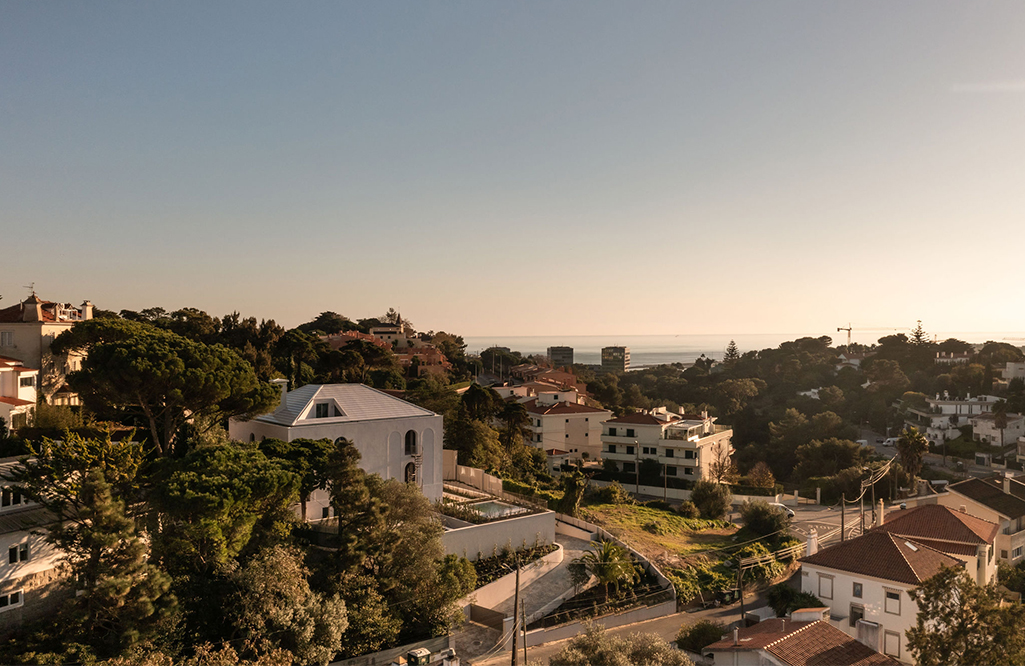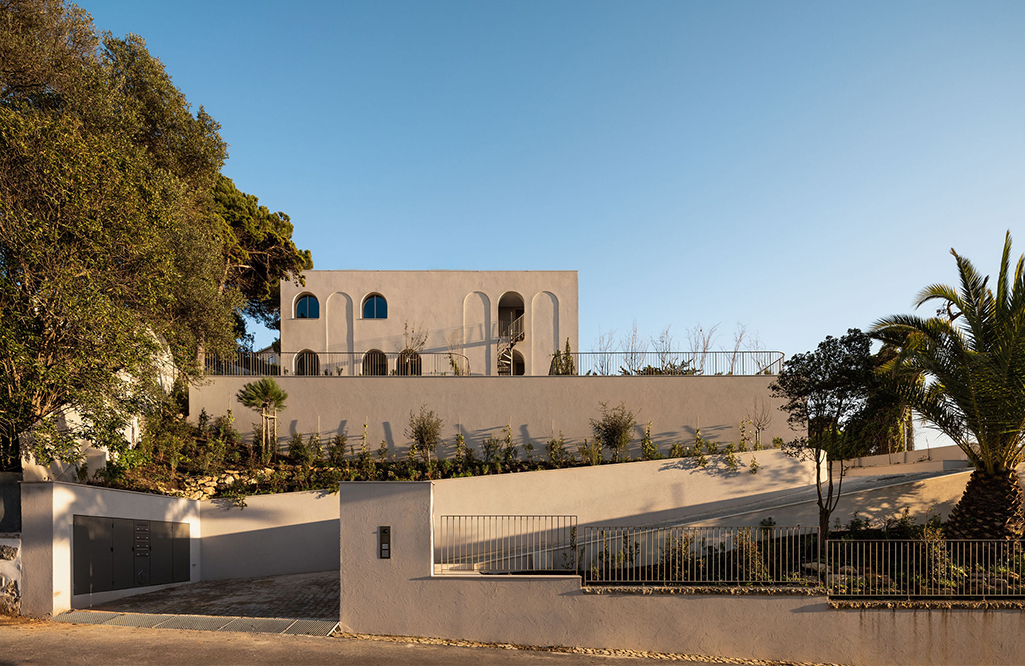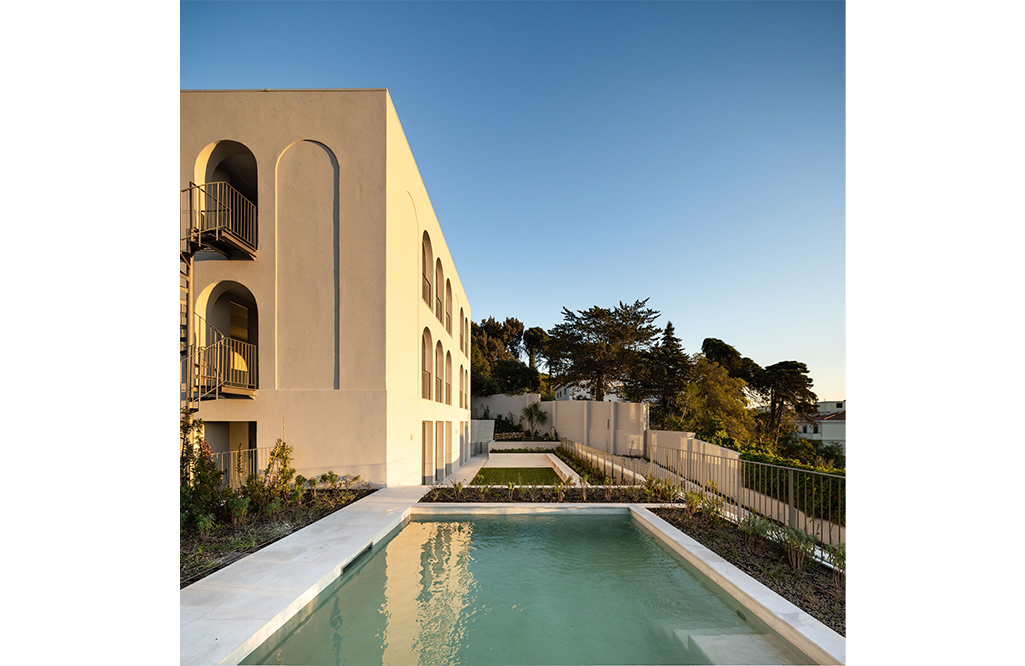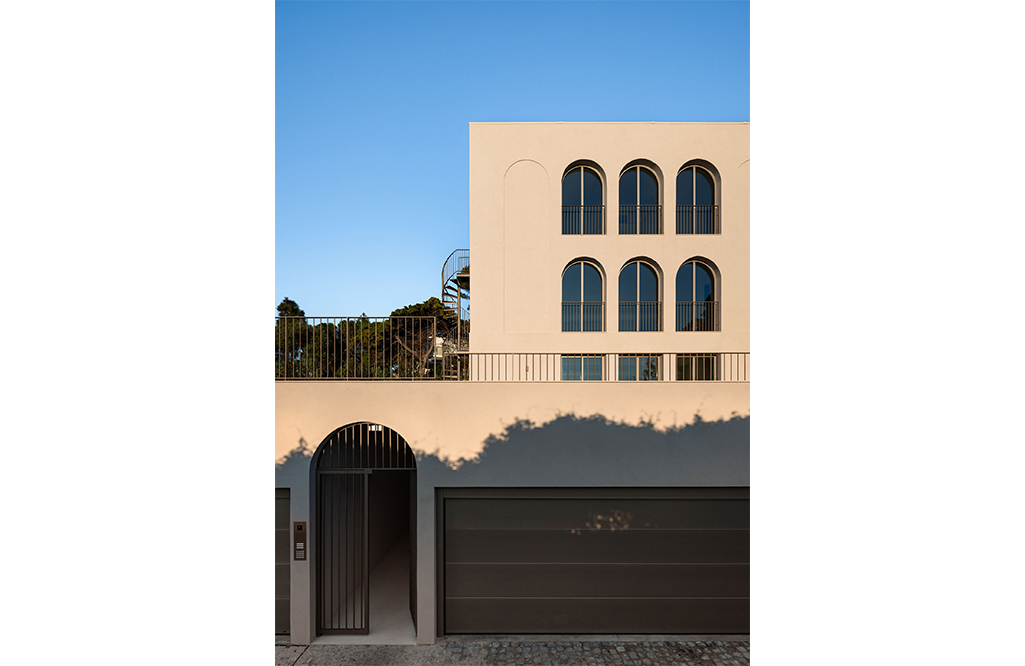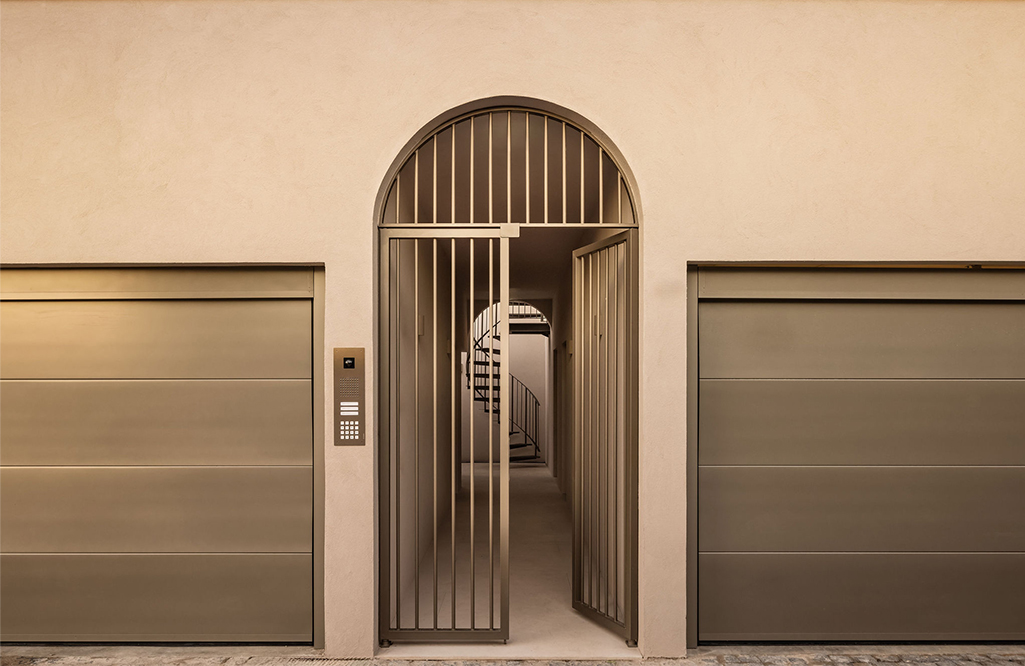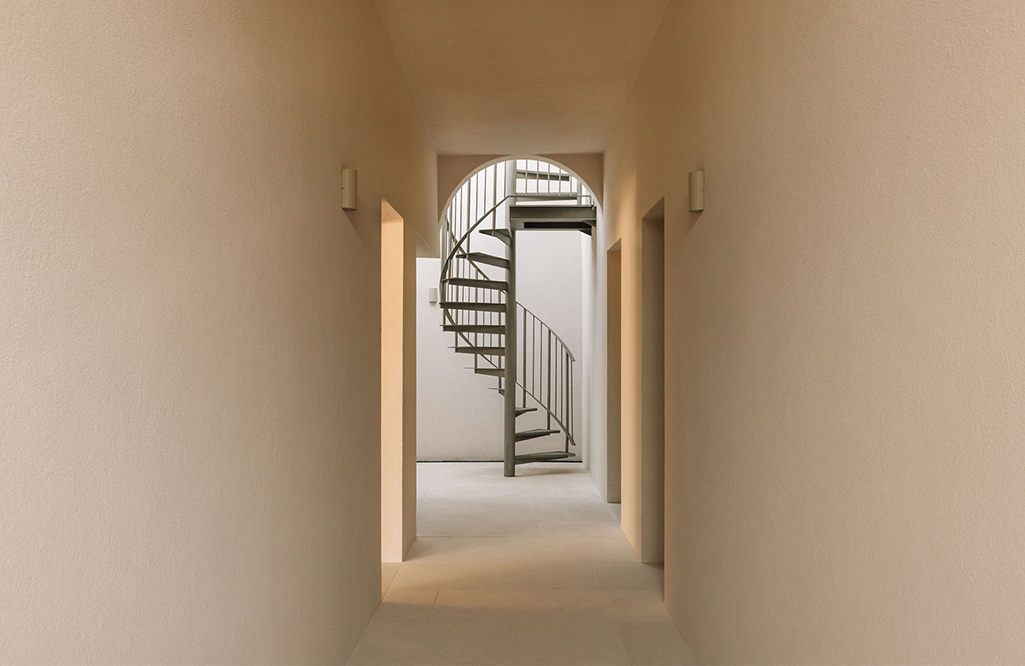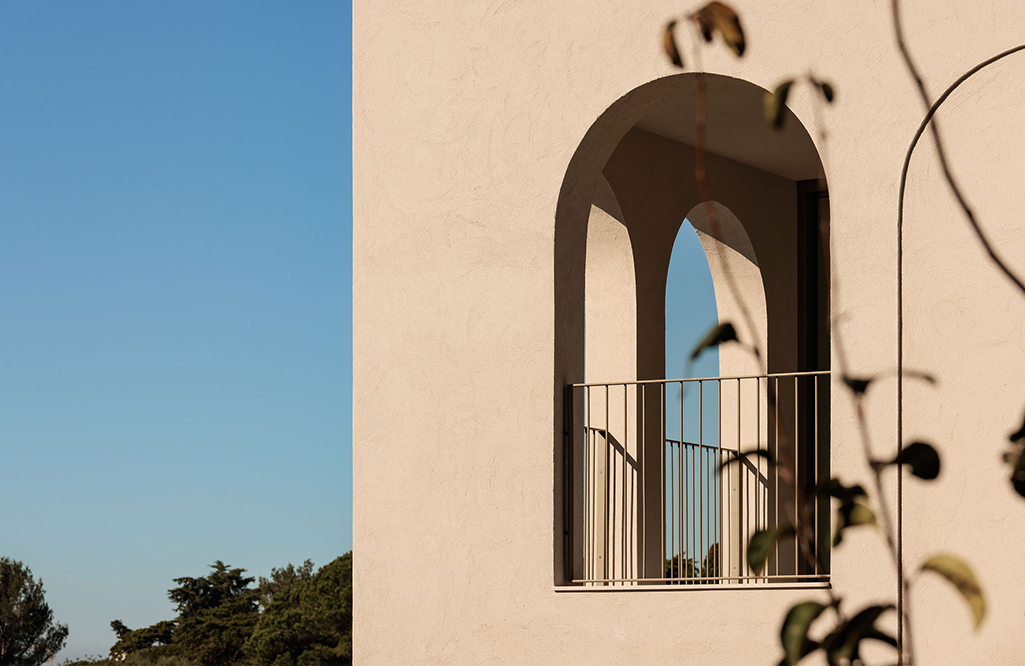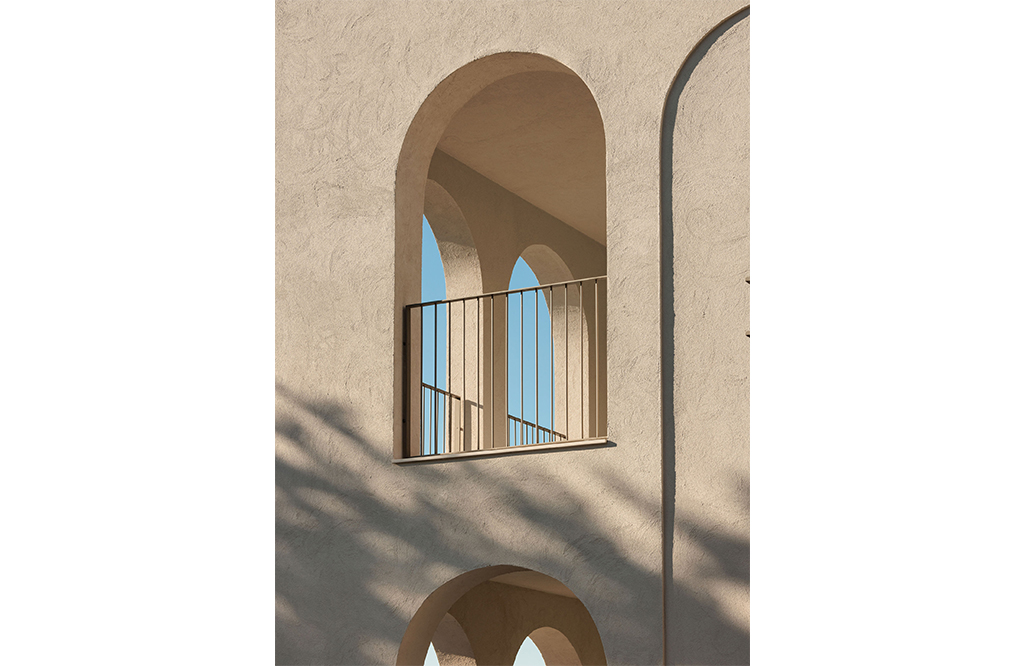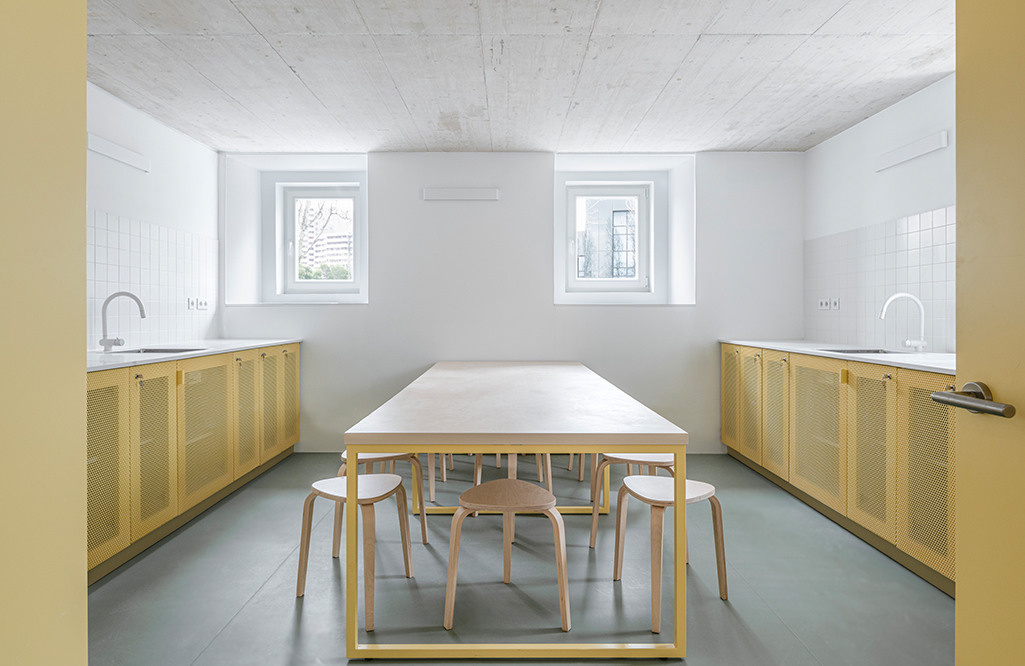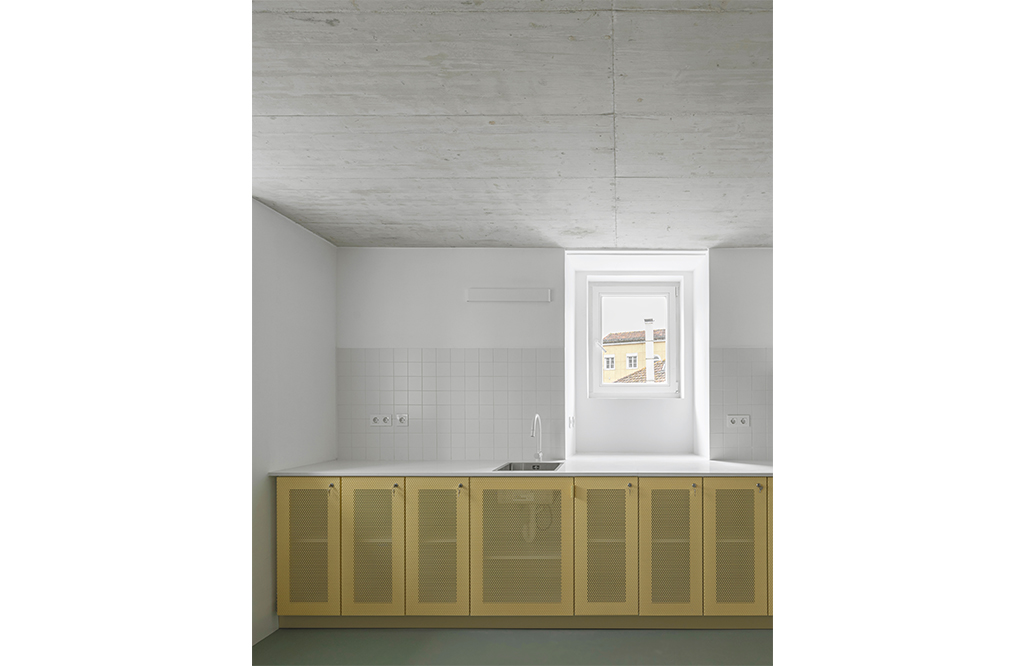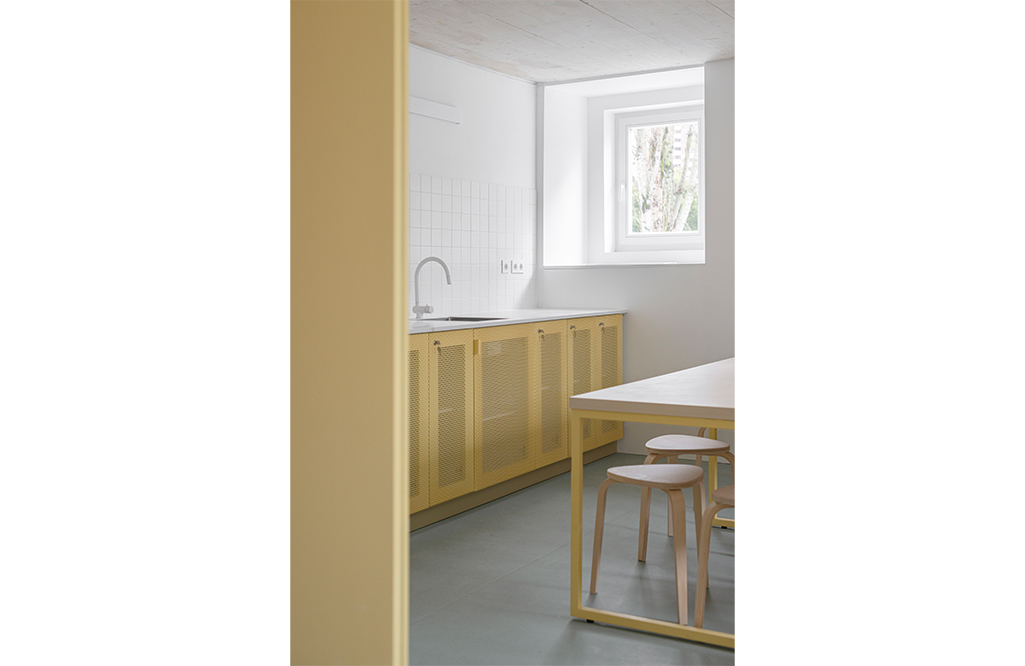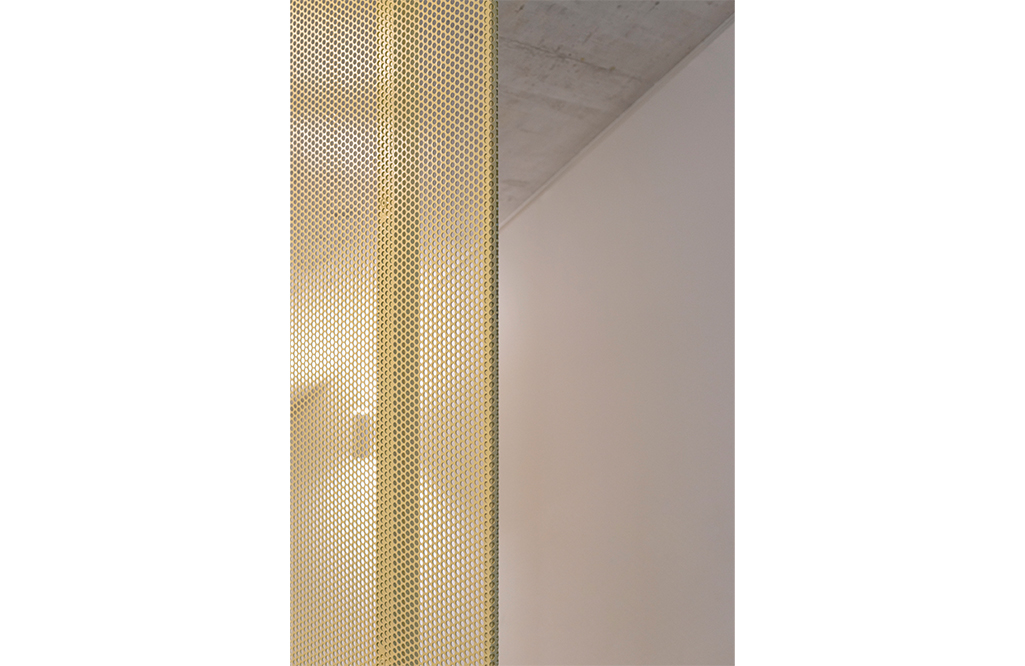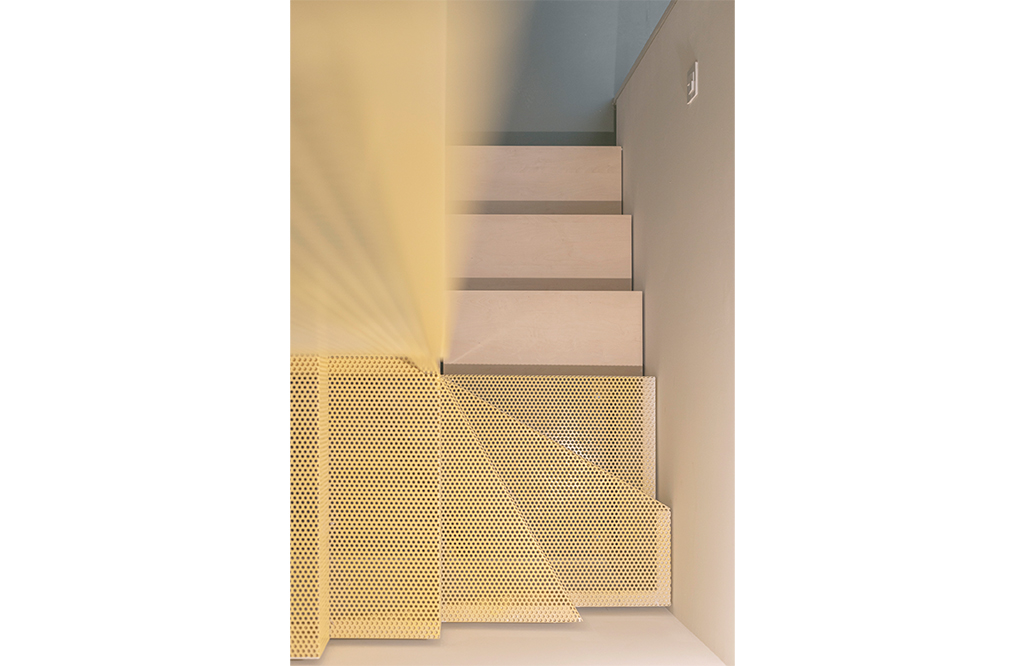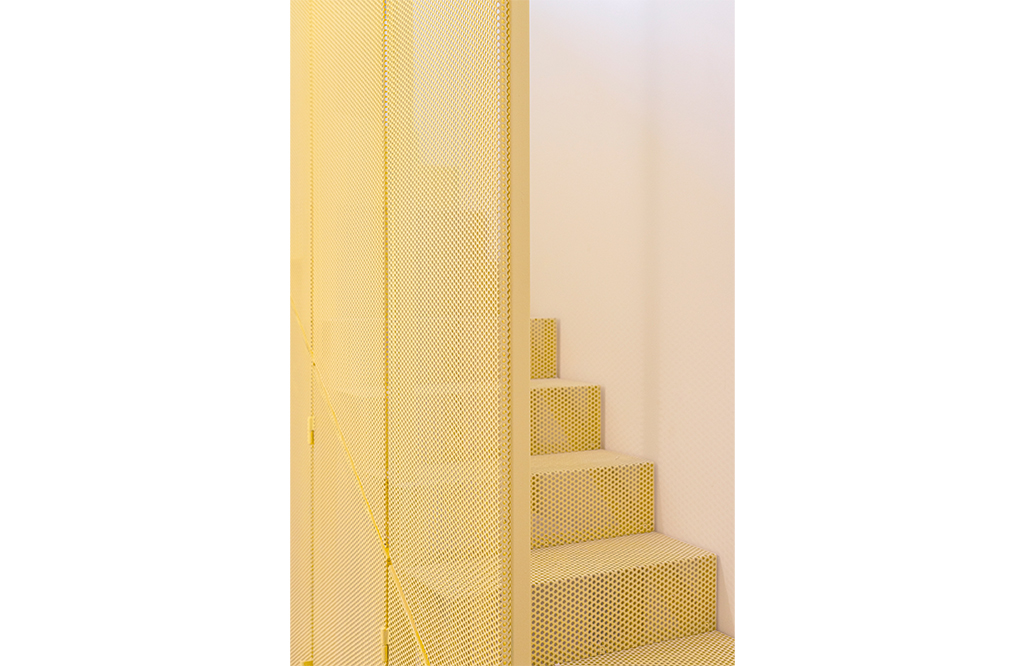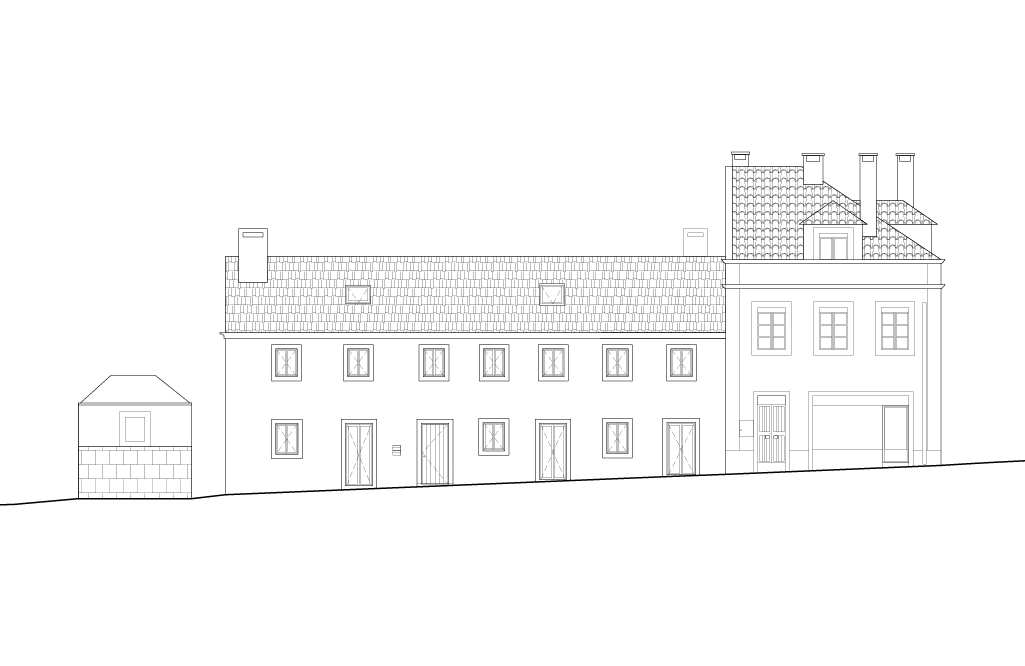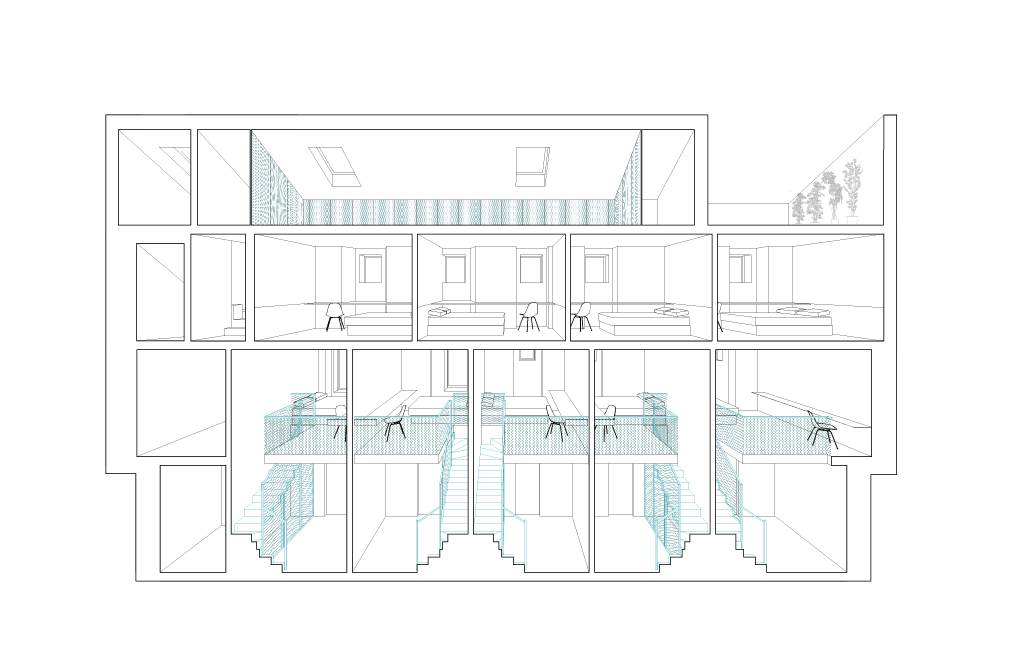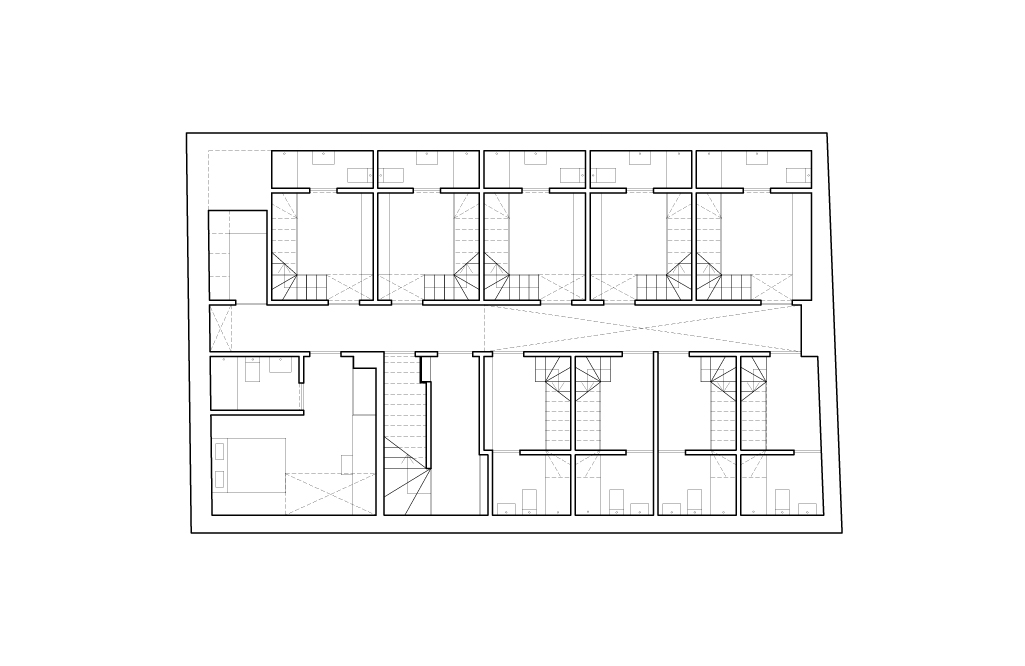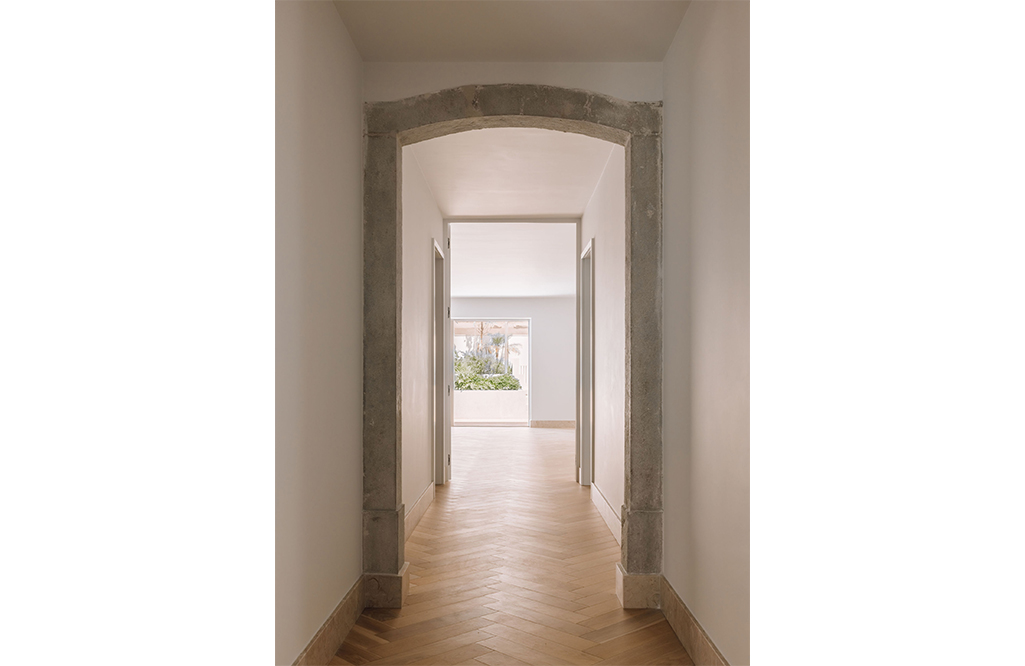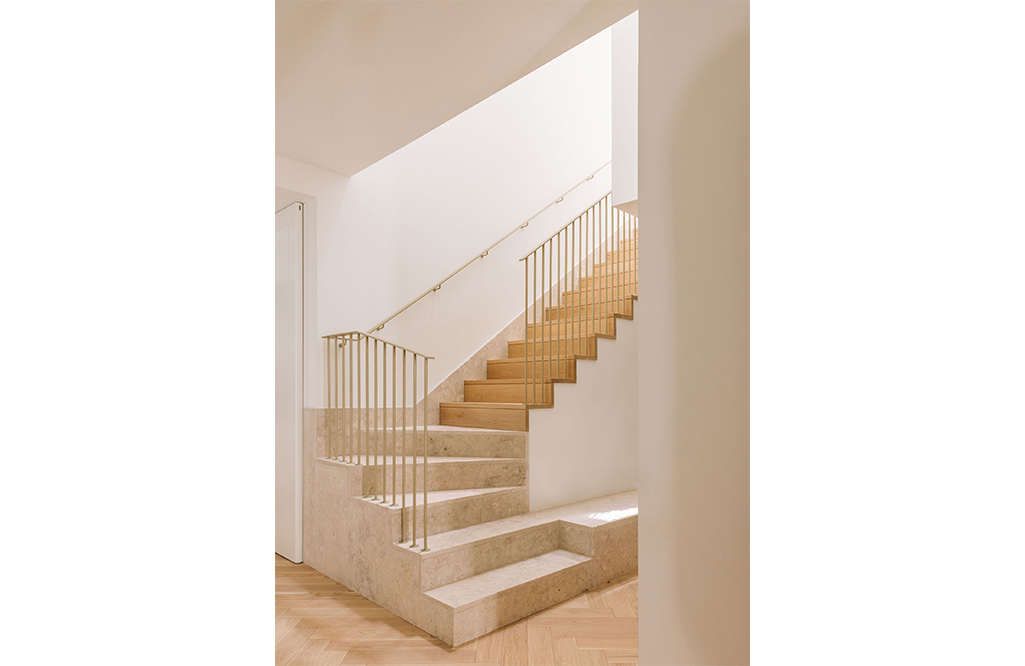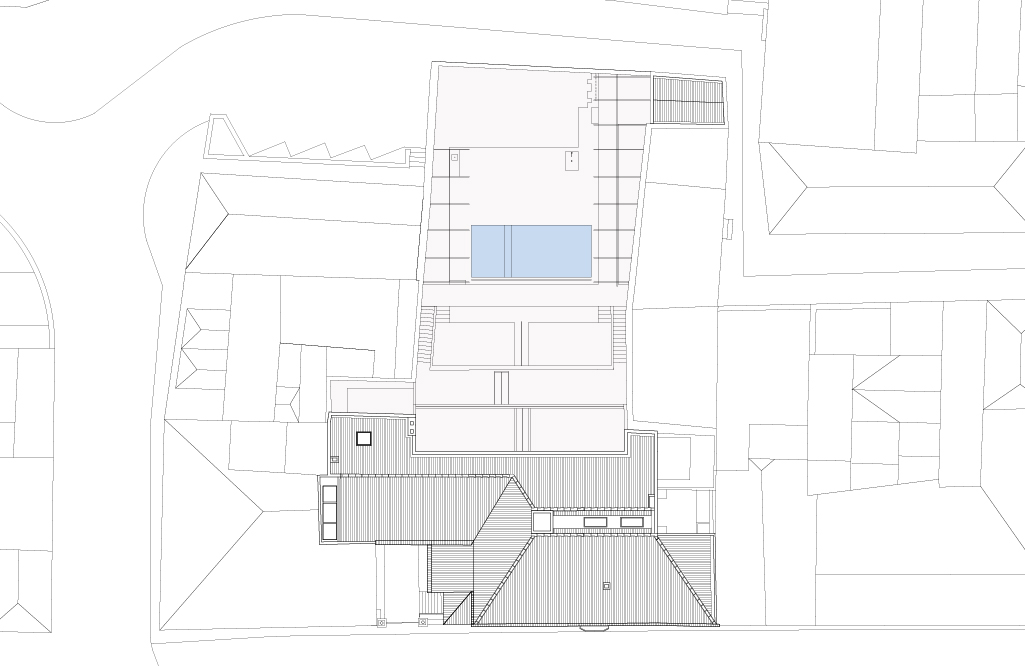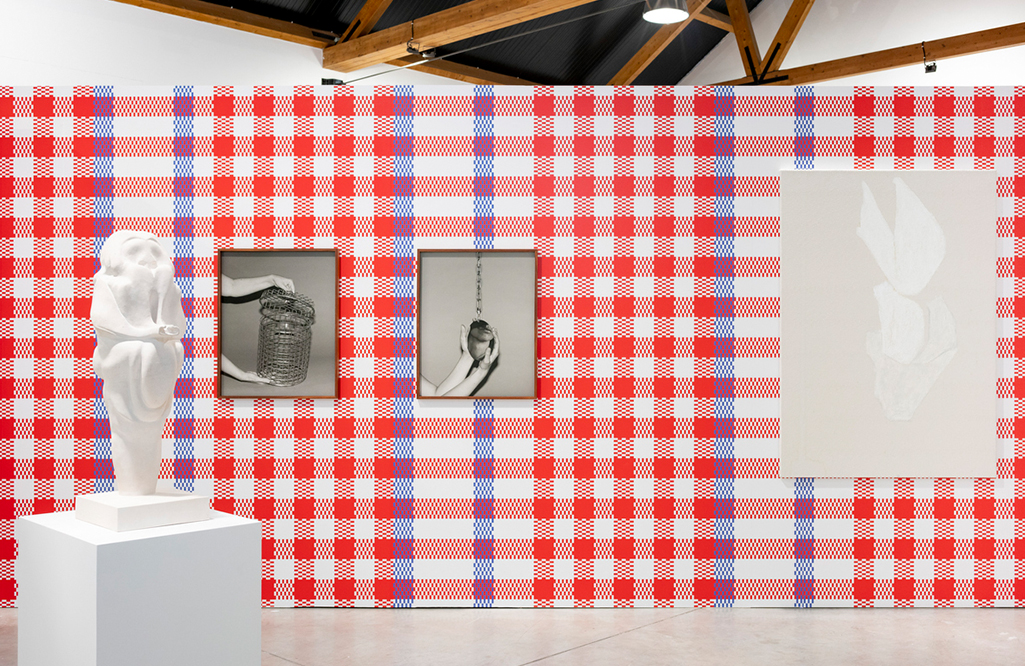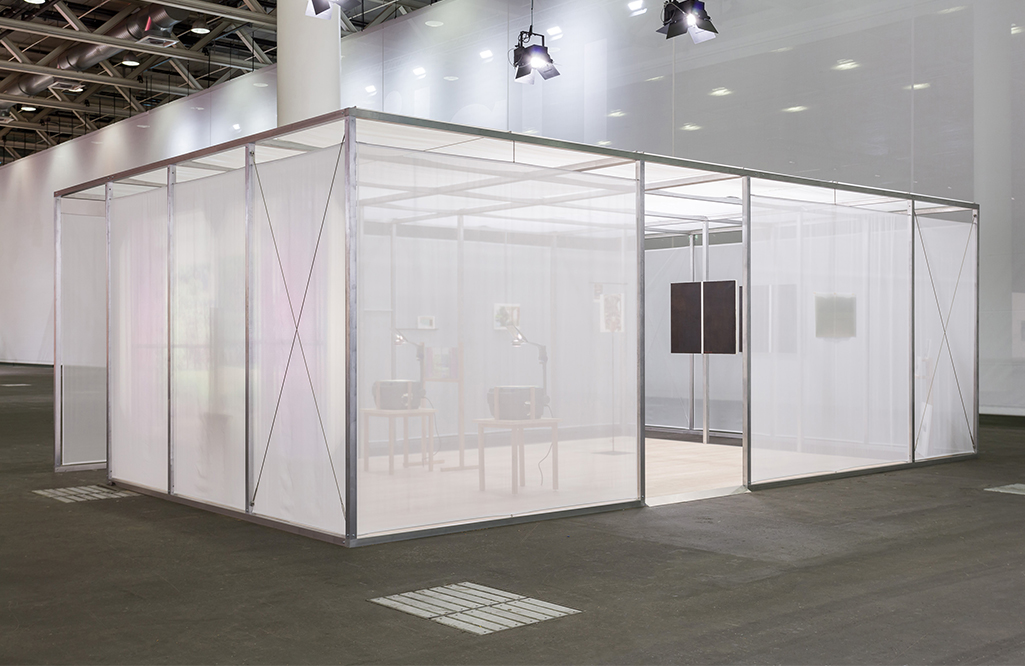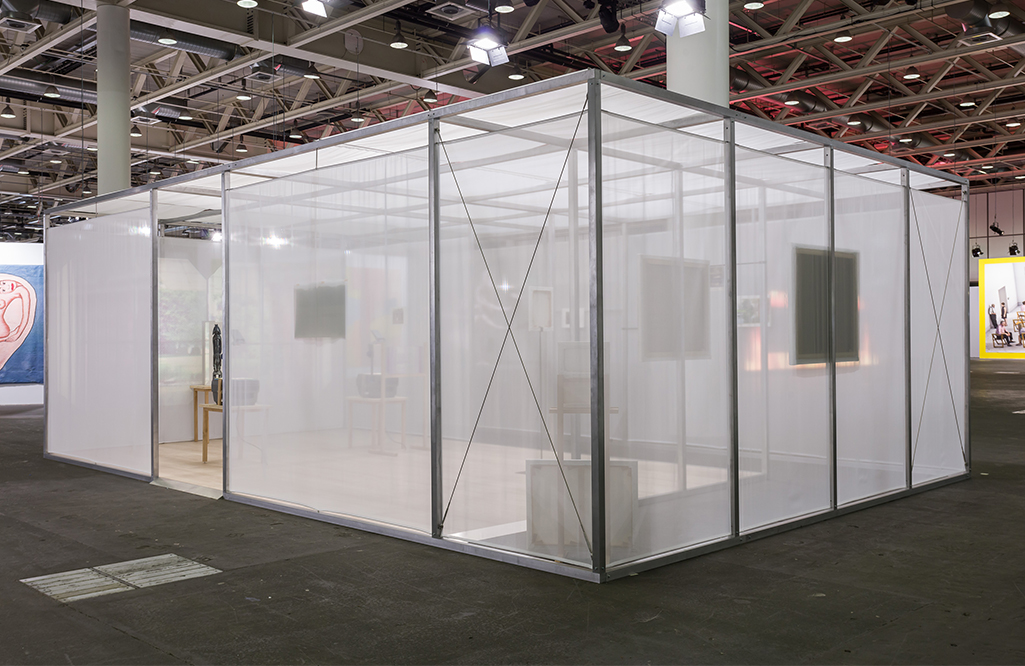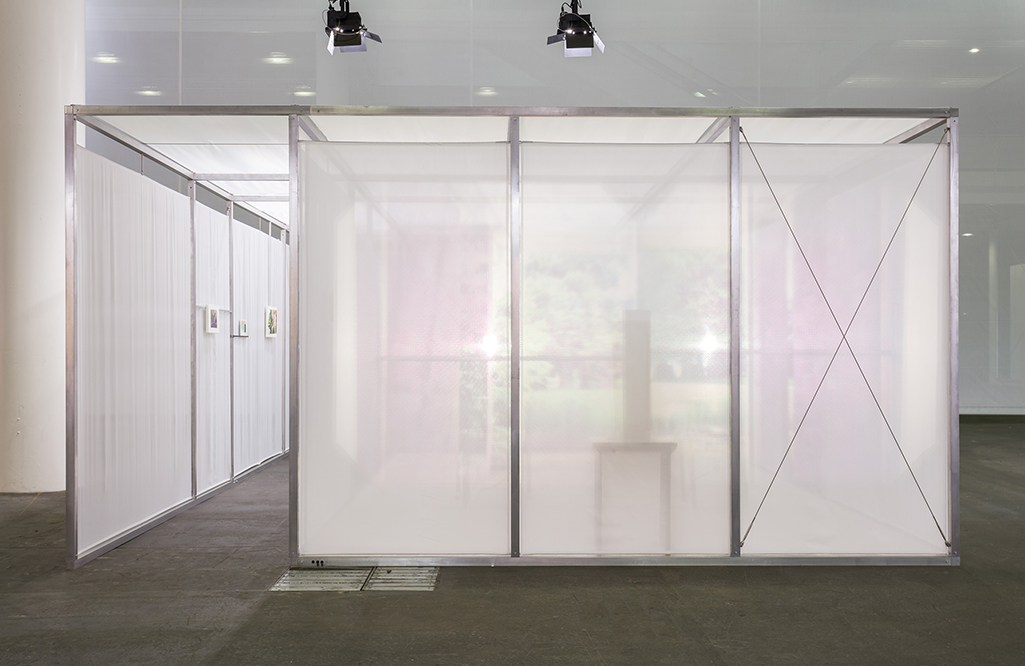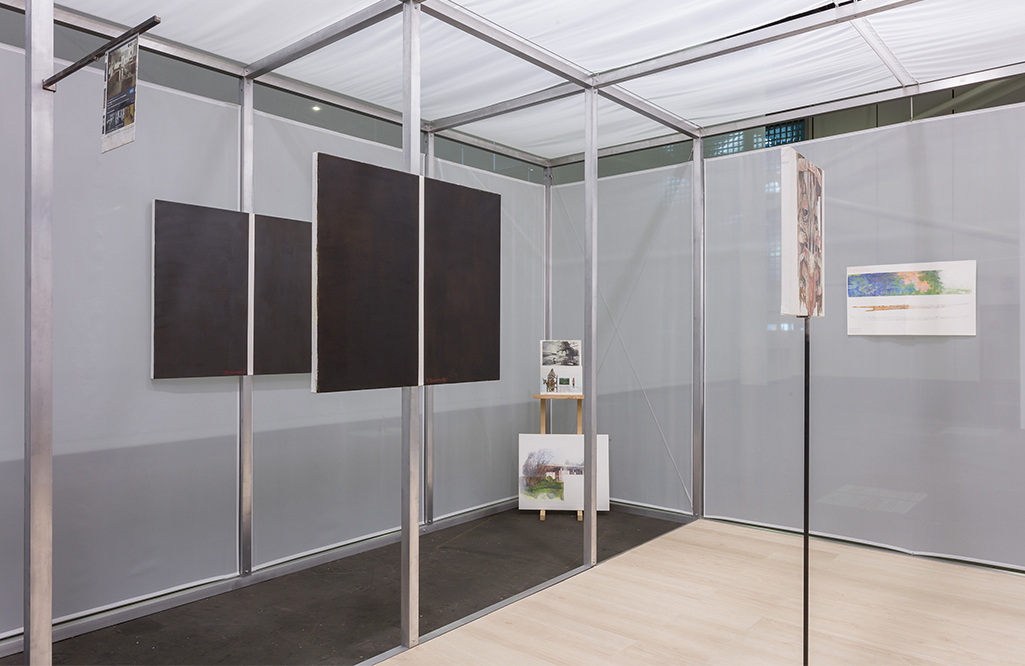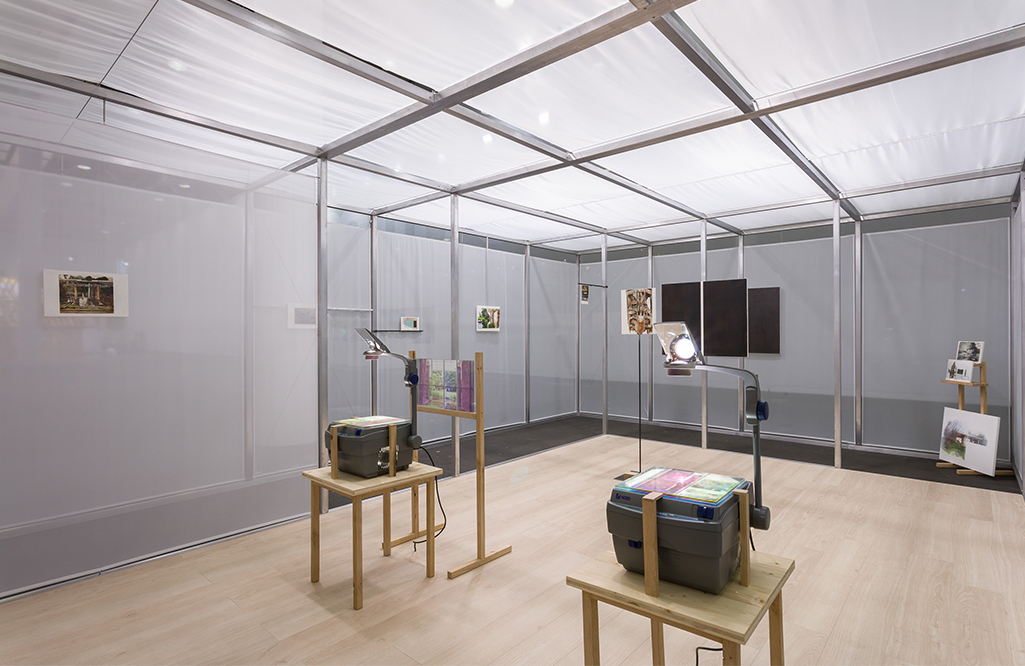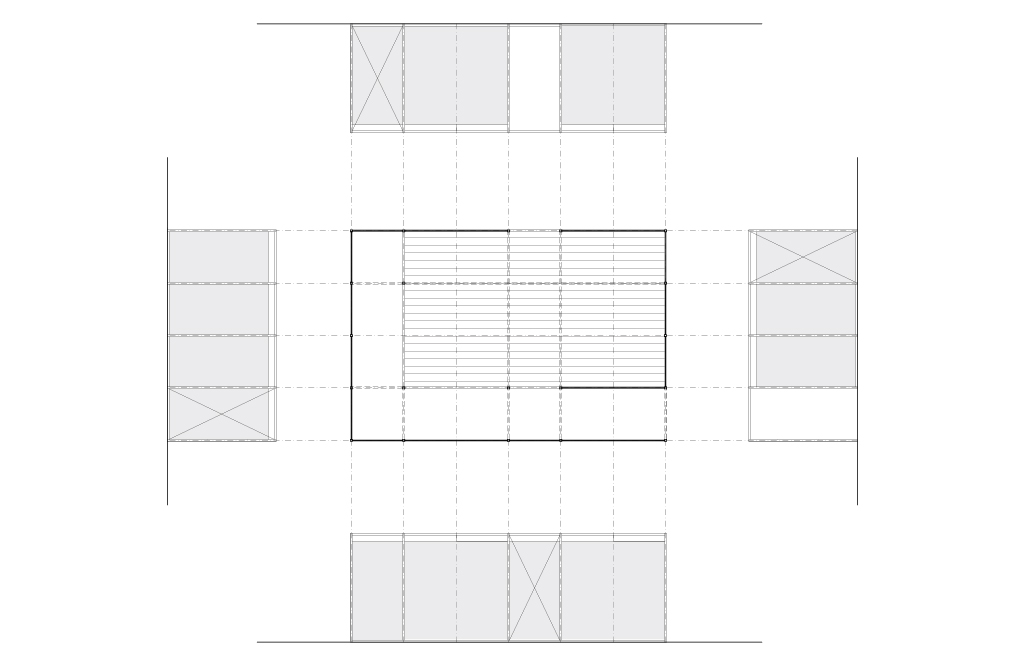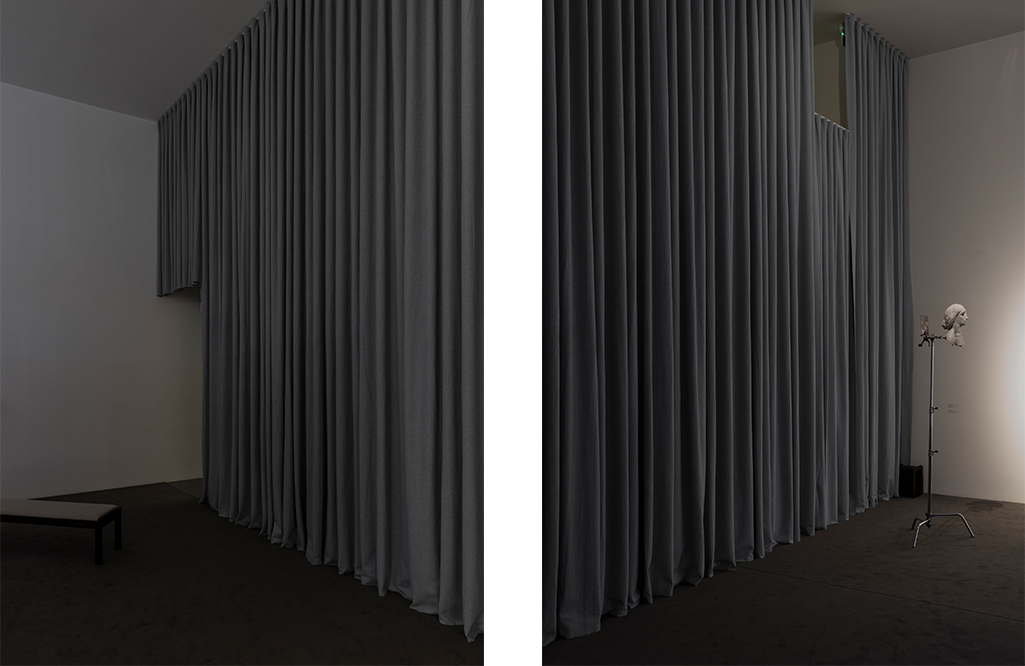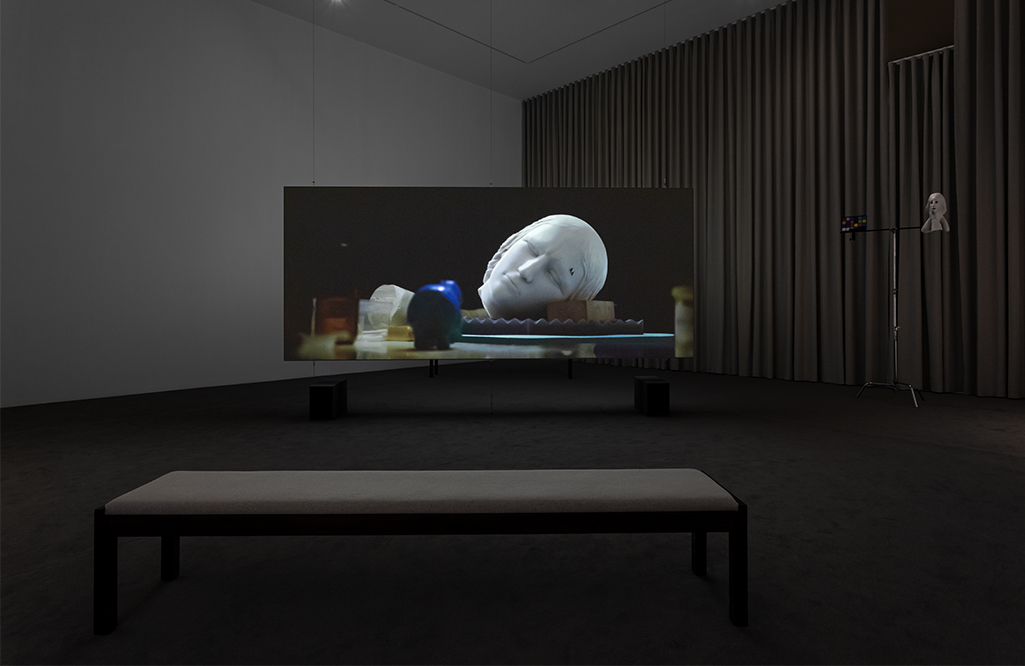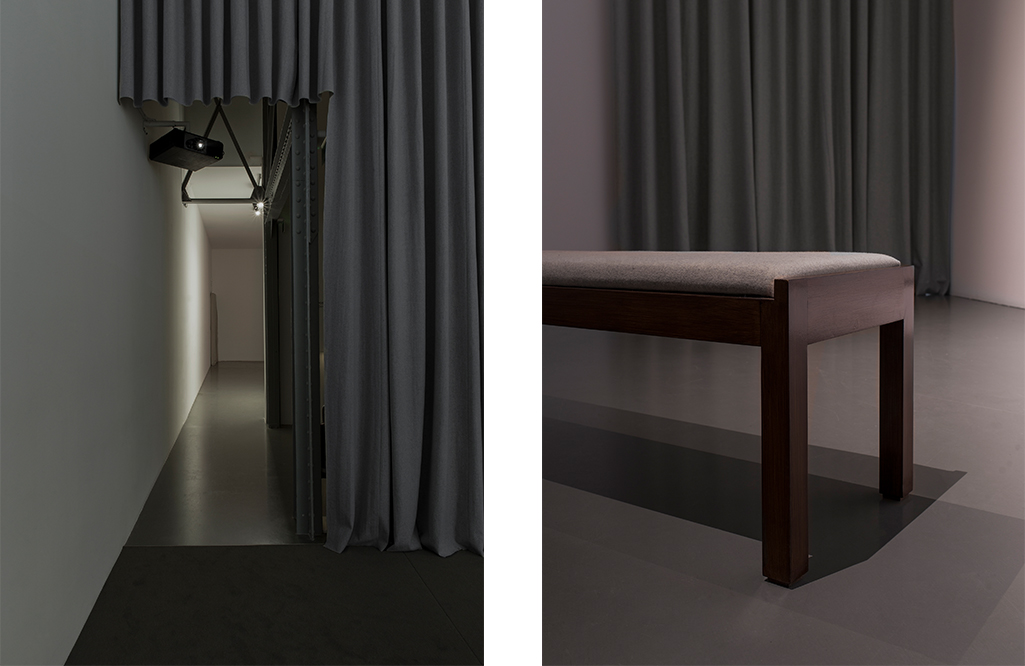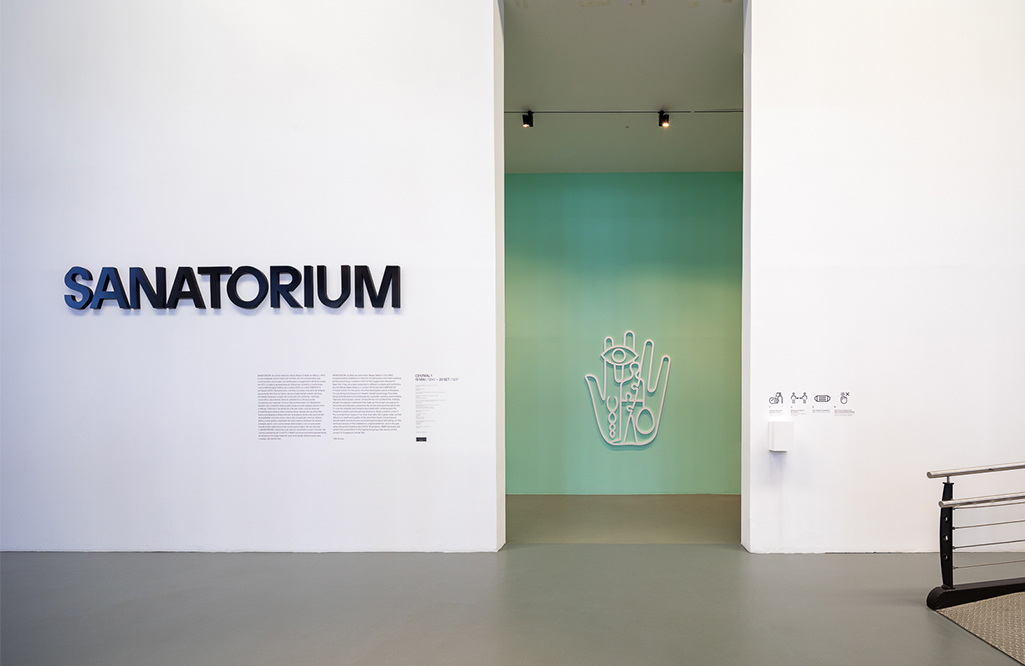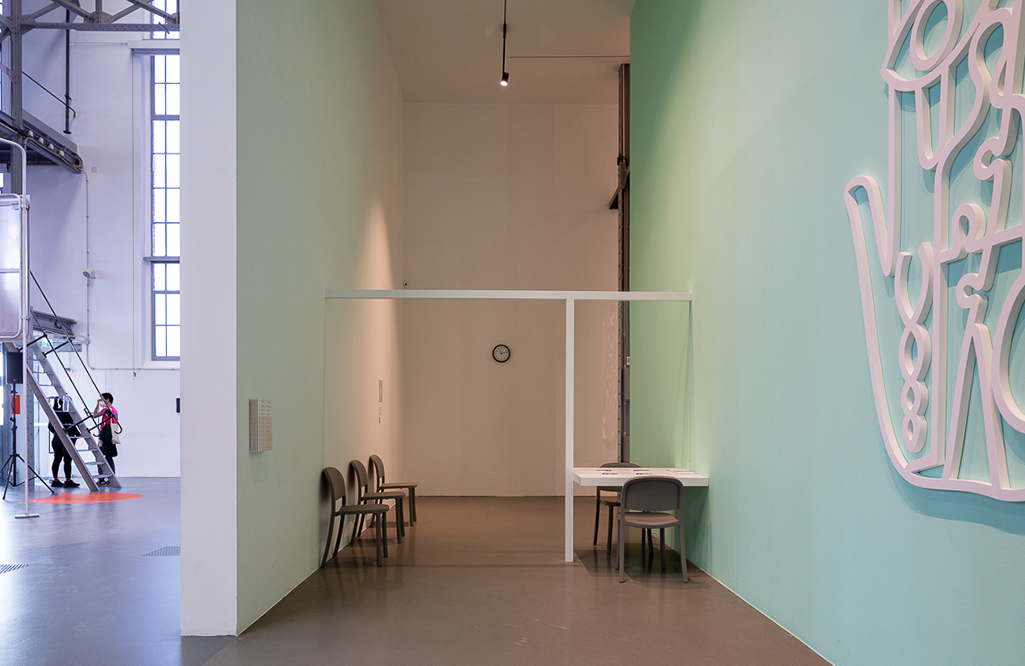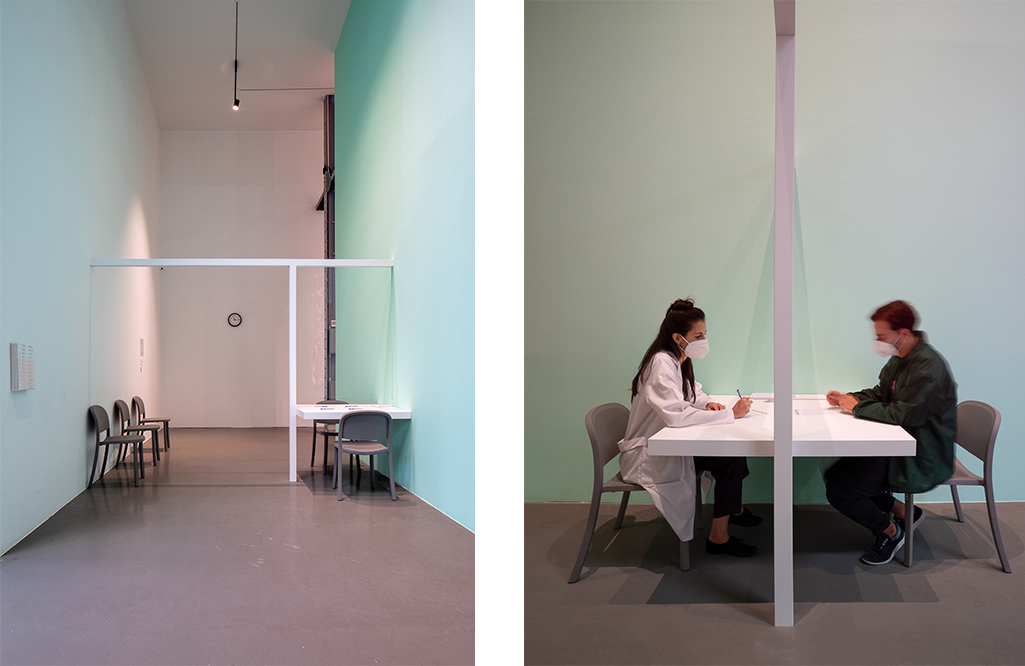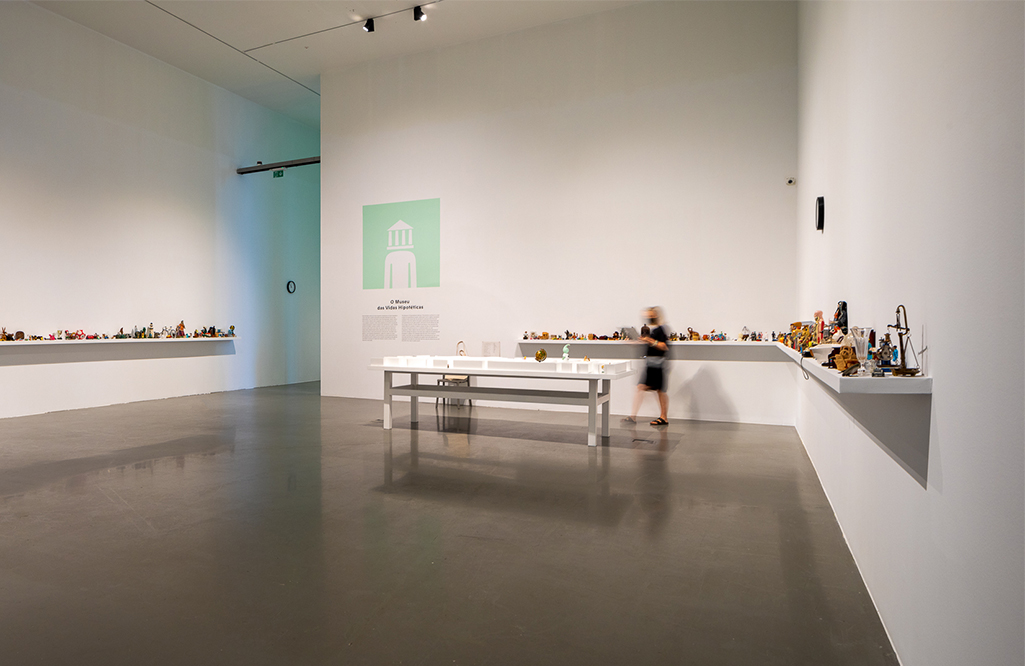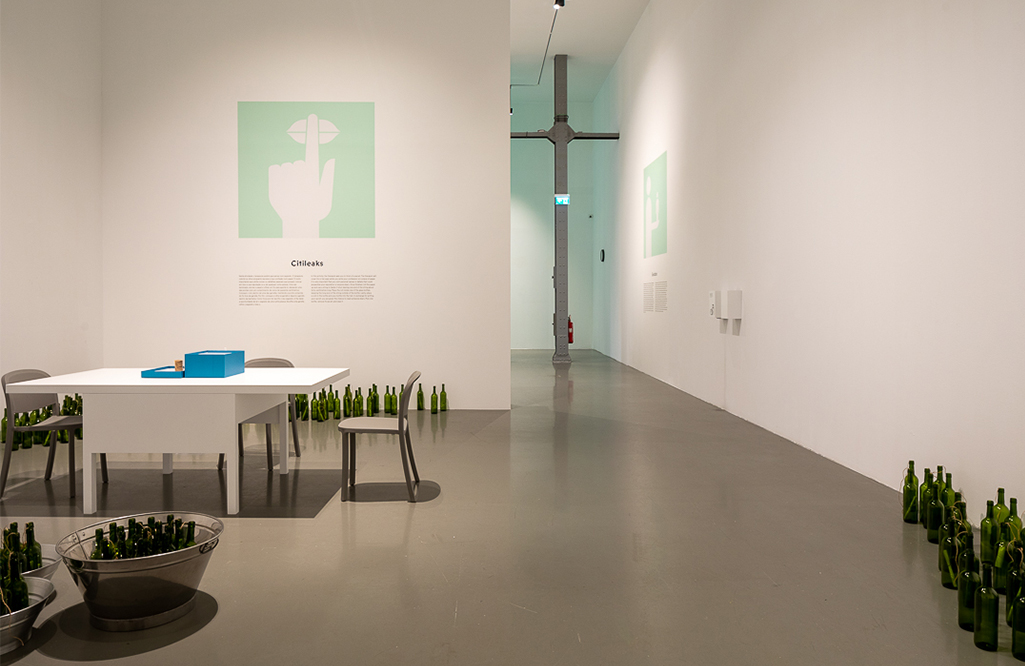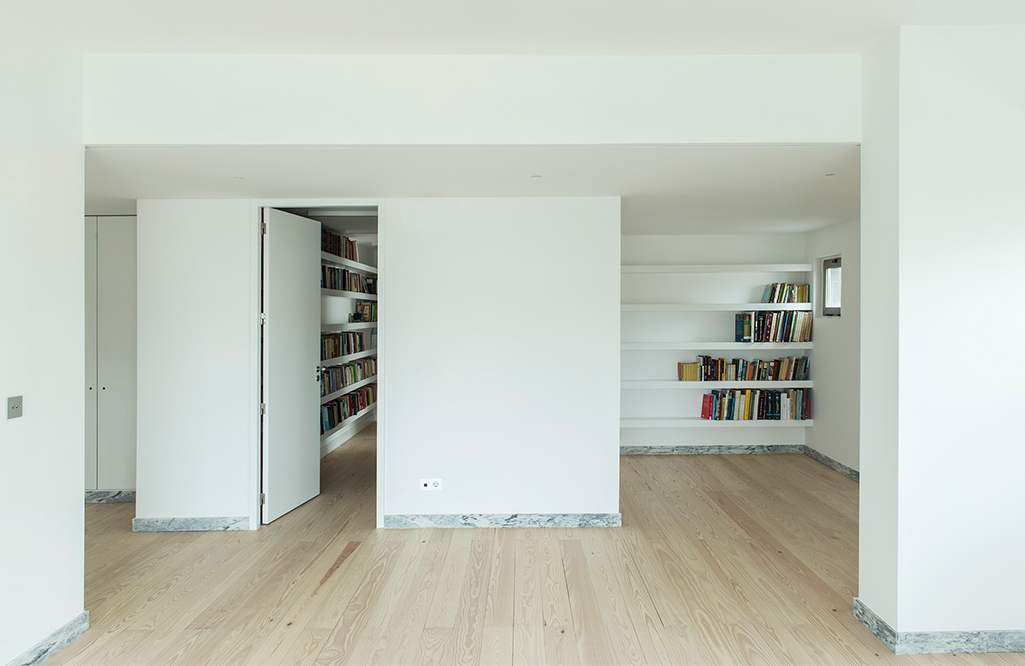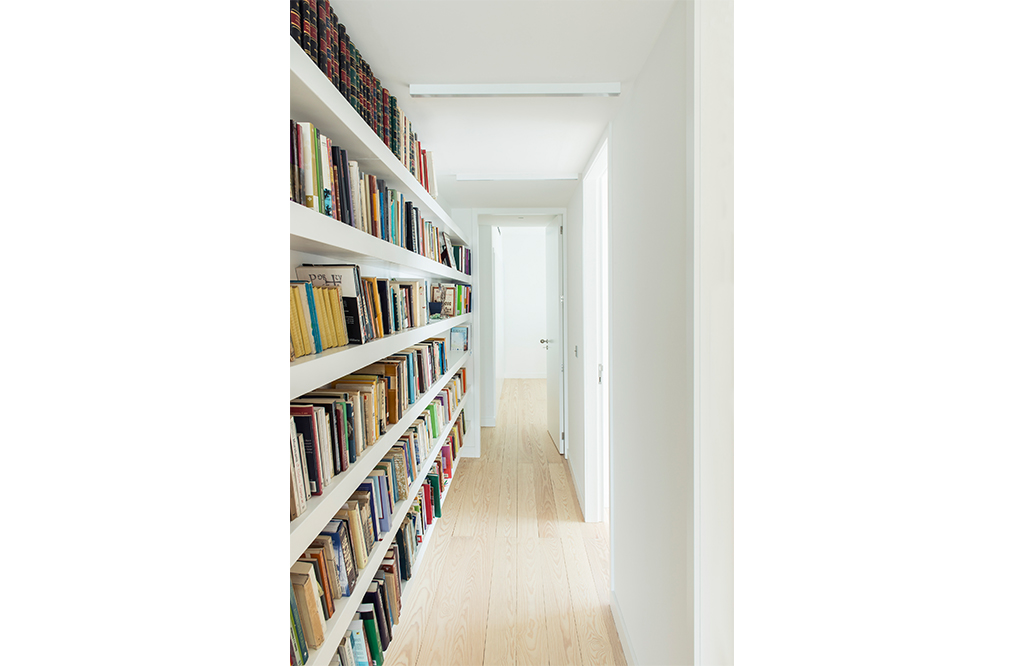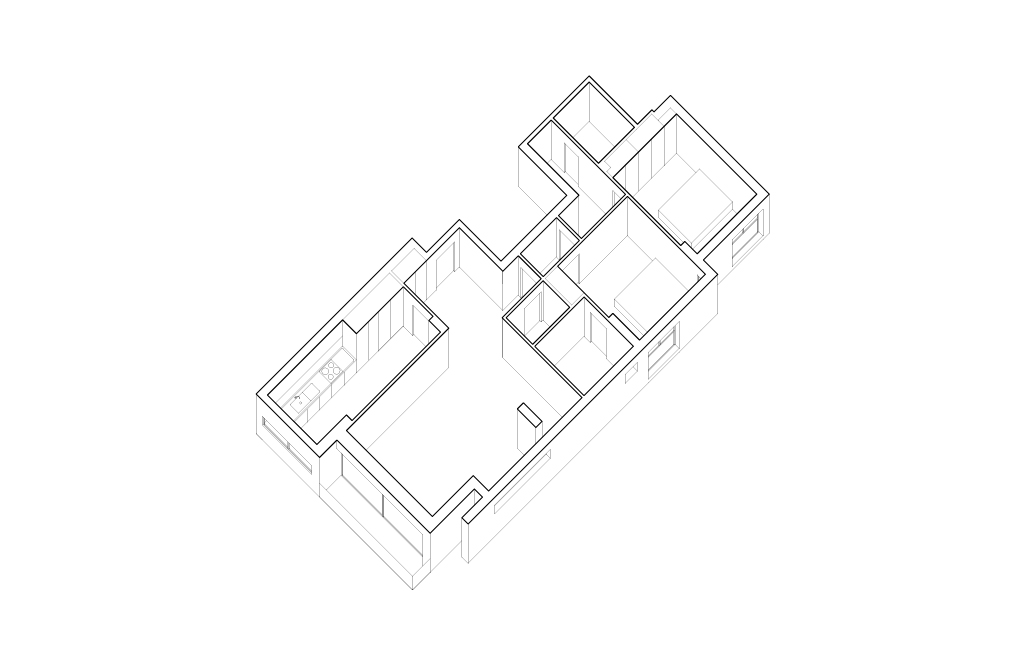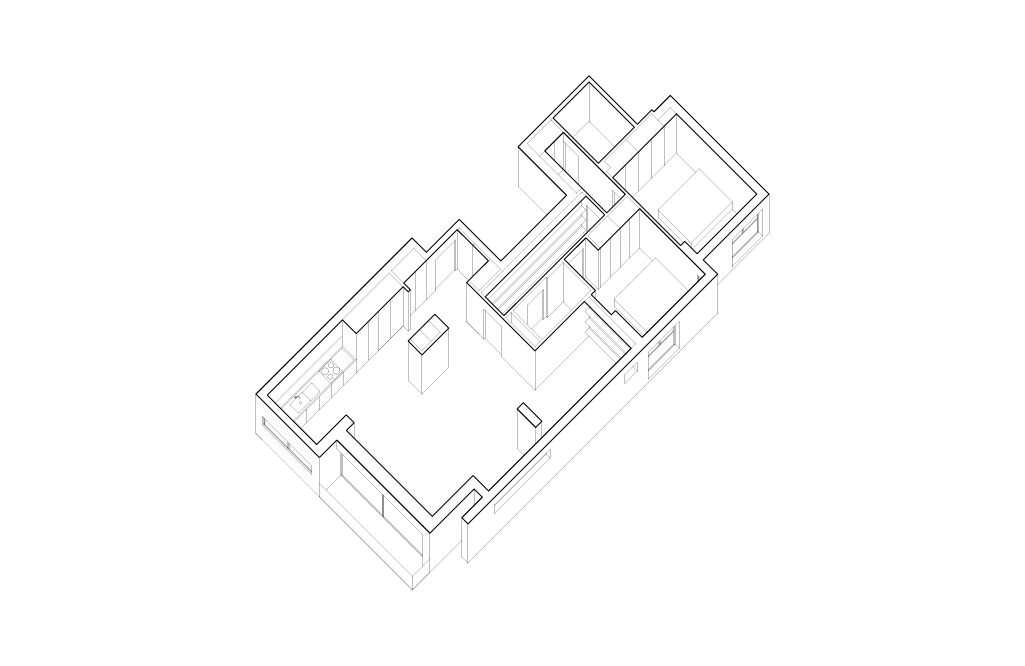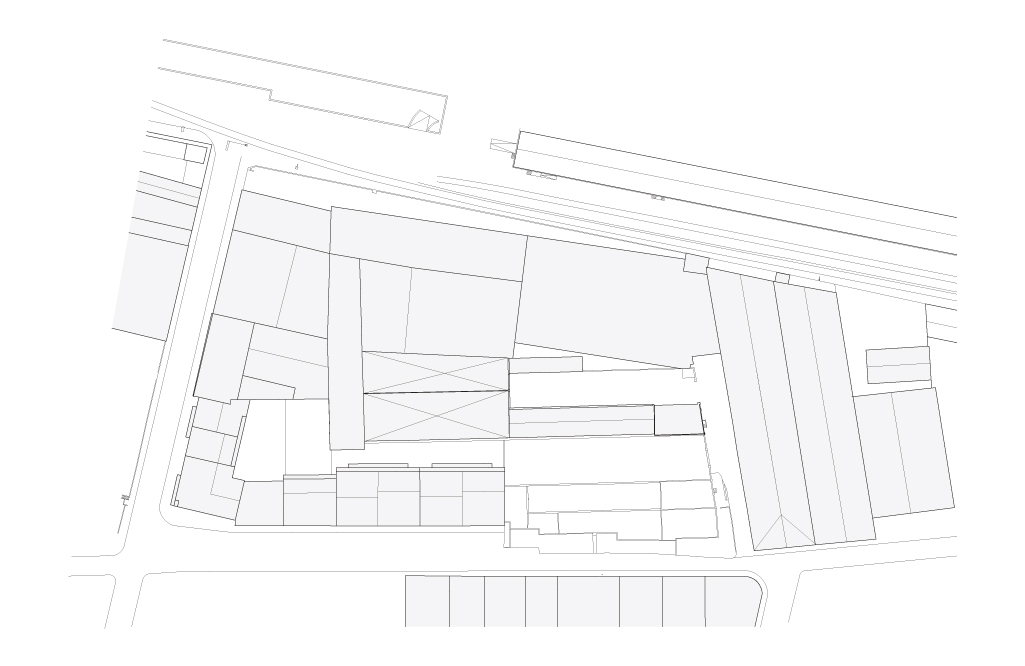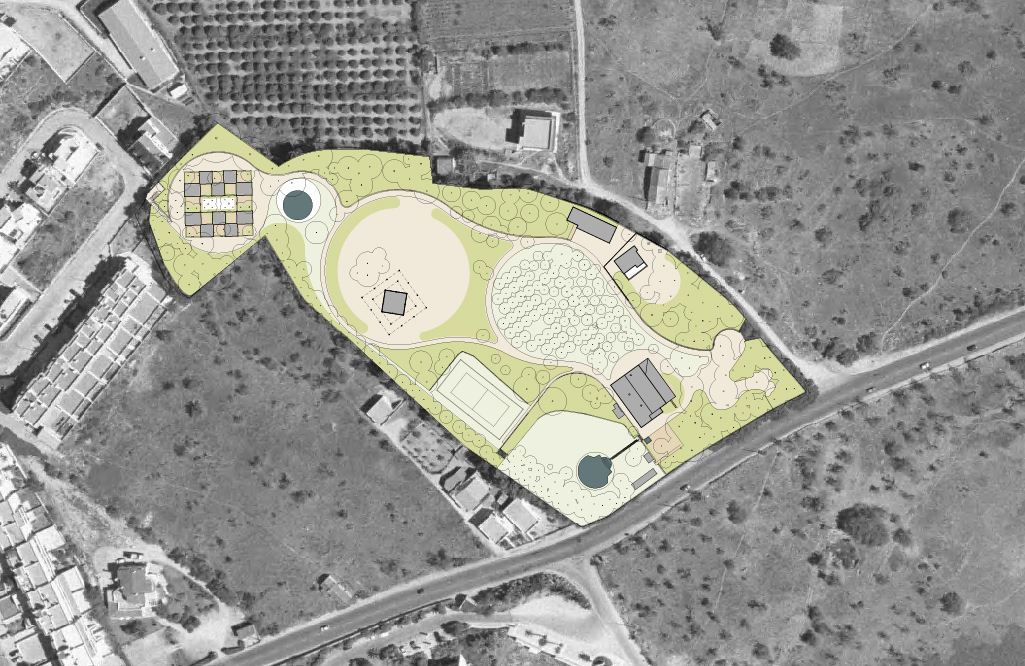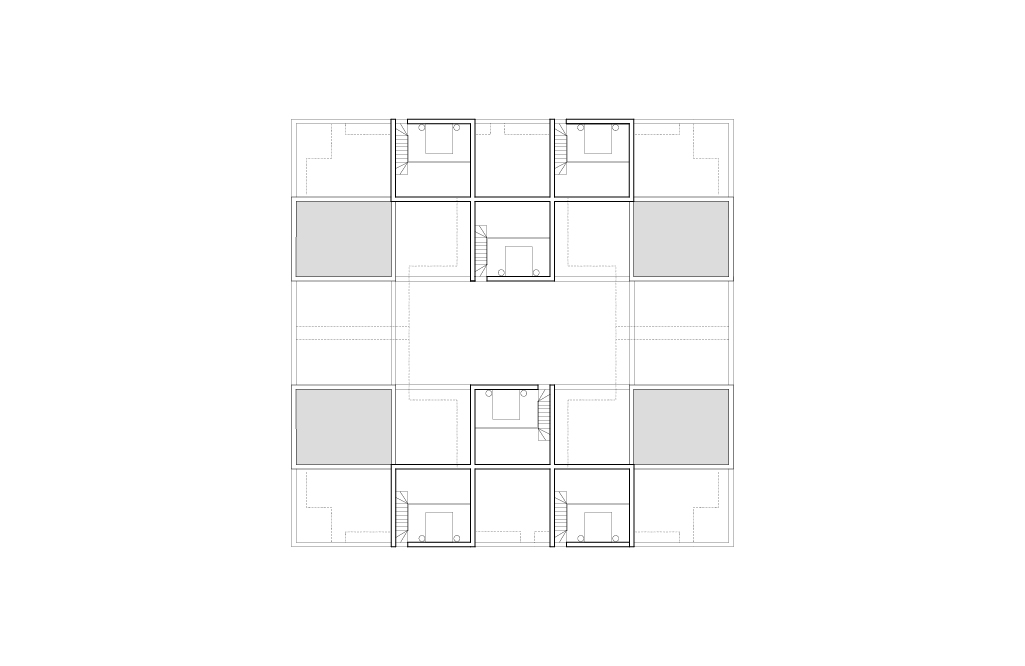Year 2019-2023 Location Estoril Area 1160m2 Client Private
The site is located in one of the hills of Monte Estoril, a coastal village that became in the 19th Century, a summer holiday cluster for Portuguese and European aristocracy. This created an eclectic building landscape, with luxurious chalets and traditional Portuguese houses, influenced by the neo-romantic architecture of the 19th century.
The new residential building accommodates 3 apartments and sits on a podium embedded in the sloped topography of the site. A sinuous ramp connects the street level to the building. The monolithic volume is entirely covered in render. The irregularities of the textured, hand-applied finish, contrast with the sharpness of the steel elements, such as window frames and balustrades. The project echoes elements of its architectural context. The 4 pitched roof building facades are wrapped with arches, displayed to create a rhythmic repetition. These are at times windows, loggias, or simply subtle recesses in the render.
The outdoor space offers different typologies, carved patios in the podium, deep loggias, and terraces with pools that merge into the landscape. Internally, the apartments are similar in their space organization. The living areas face southwest, being this the most open and permeable elevation, with panoramic views to the sea and surrounding landscape, whereas bedrooms have a more intimist atmosphere. The top-floor apartment encapsulates the attic space, through a double high ceiling space. The roof, covered in glazed white tiles is carved with 3 small patios.
